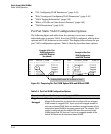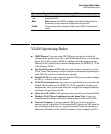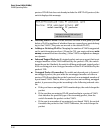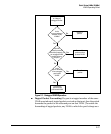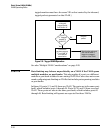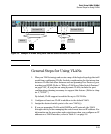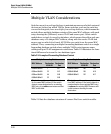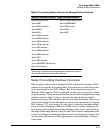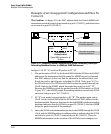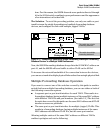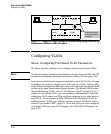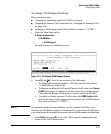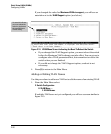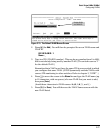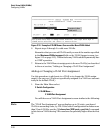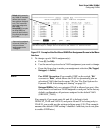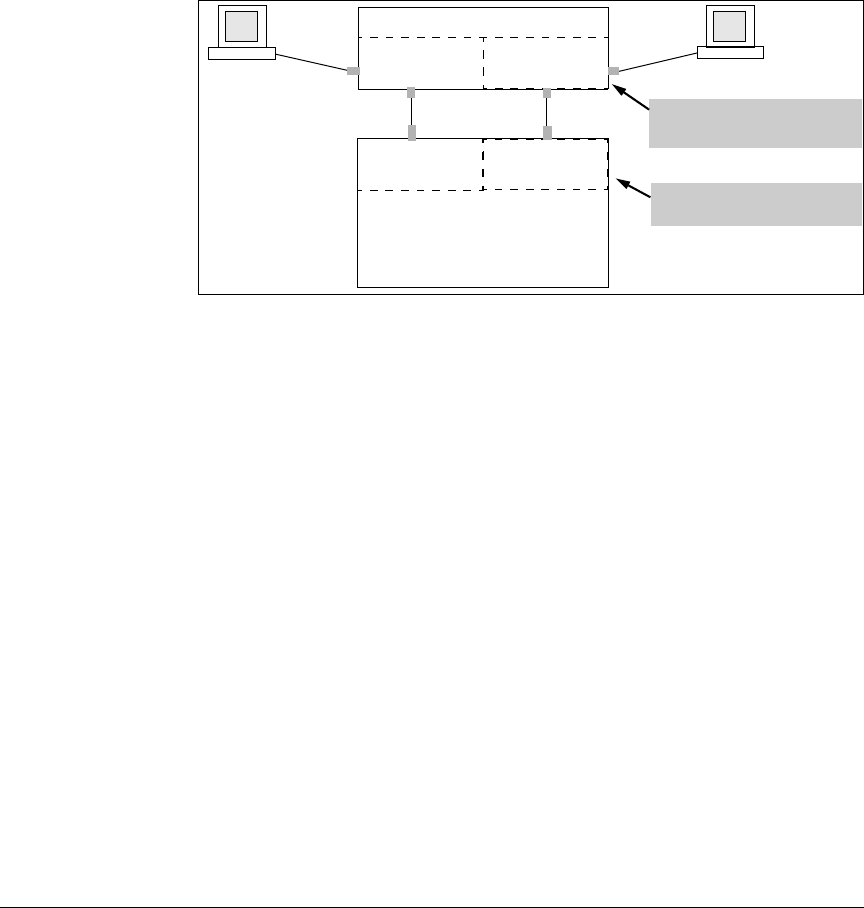
Static Virtual LANs (VLANs)
Multiple VLAN Considerations
Example of an Unsupported Configuration and How To
Correct It
The Problem. In figure 2-10, the MAC address table for Switch 8000M will
sometimes record the switch as accessed on port A1 (VLAN 1), and other times
as accessed on port B1 (VLAN 2):
Switch 8000M
VLAN 1
VLAN 2
8212zl Switch
Routing Enabled
(Same MAC address for all
VLANs.)
VLAN 1
VLAN 2
This switch has multiple
forwarding databases.
This switch has a single
forwarding database.
PC “A”
PC “B”
A1
B1
C1
D1
Figure 2-10. Example of Invalid Configuration for Single-Forwarding to Multiple-
Forwarding Database Devices in a Multiple VLAN Environment
In figure 2-10, PC “A” sends an IP packet to PC “B”.
1. The packet enters VLAN 1 in the Switch 8000 with the 8212zl switch’s MAC
address in the destination field. Because the 8000M has not yet learned
this MAC address, it does not find the address in its address table, and
floods the packet out all ports, including the VLAN 1 link (port “A1”) to
the 8212zl switch. The 8212zl switch then routes the packet through the
VLAN 2 link to the 8000M, which forwards the packet on to PC “B”.
Because the 8000M received the packet from the 8212zl switch on VLAN
2 (port “B1”), the 8000M’s single forwarding database records the 8212zl
switch as being on port “B1” (VLAN 2).
2. PC “A” now sends a second packet to PC “B”. The packet again enters
VLAN 1 in the Switch 8000 with the 8212zl switch’s MAC address in the
destination field. However, this time the Switch 8000M’s single forwarding
database indicates that the 8212zl is on port B1 (VLAN 2), and the 8000M
drops the packet instead of forwarding it.
3. Later, the 8212zl switch transmits a packet to the 8000M through the VLAN
1 link, and the 8000M updates its address table to indicate that the 8212zl
switch is on port A1 (VLAN 1) instead of port B1 (VLAN 2). Thus, the
8000M’s information on the location of the 8212zl switch changes over
2-22



